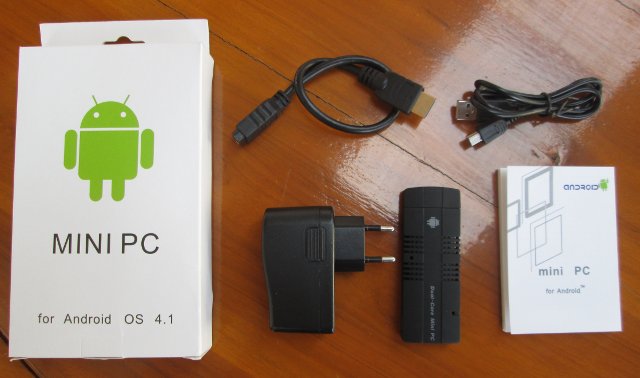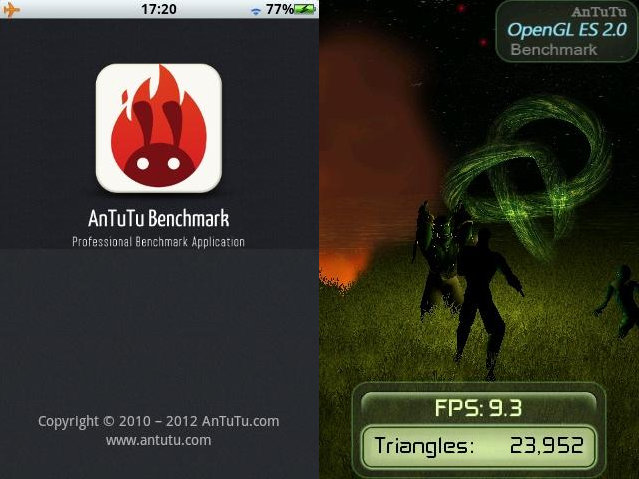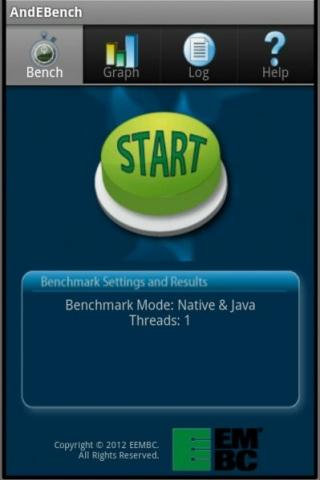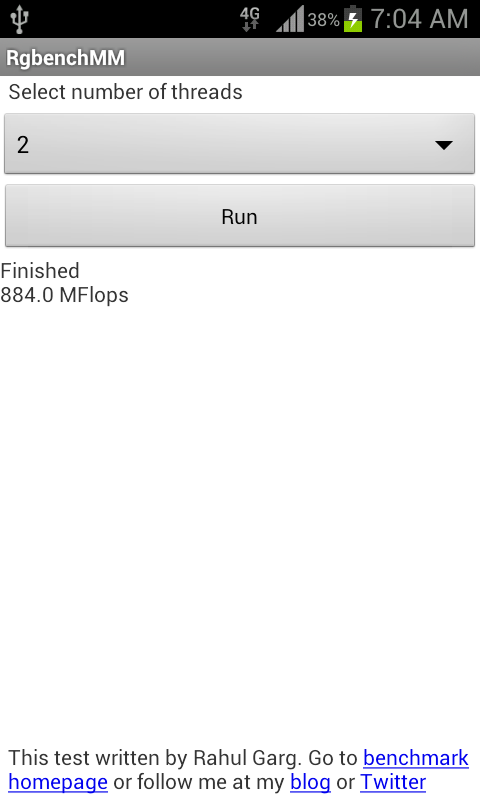At the beginning of December 2012, I wrote a post about Droid Stick A2 mini PC based on AMLogic AML-8726-MX to show some pictures of the device, but I could not really test as the firmware was not complete, and was promise a working firmware soon. Unfortunately, things did not really go according to plans for this hardware, so the firmware never showed up… Luckily, Kimdecent found another version of the device with basically the same specs, a slightly different casing, and more importantly a “working” firmware. The company was kind enough to send me another sample for review. Droid Stick A2 Unboxing Here’s what the new Droid Stick A2 and its accessories look like. Beside Droid Stick A2 mini PC, the package contains a power adapter (5V/2A), a mini USB to USB cable, a short HDMI cable and a user’s manual in English. A close up shows the device […]
GPUs Comparison: ARM Mali vs Vivante GCxxx vs PowerVR SGX vs Nvidia Geforce ULP
I’m always very confused when it comes to comparing GPUs in different SoCs, and I could not really find comparisons on the web, so I’m going to give it a try even though, as you’re going to find out, it’s actually quite a challenge. There are mainly 4 companies that provide GPUs: ARM, Imagination Technologies, Vivante and Nvidia. [Update: Two comments mentioned Qualcomm Adreno and Broadcom VideoCore are missing from the list. Maybe I’ll do an update later]. Each company offers many different versions and flavors of their GPU as summarized below. ARM Imagination Technologies Vivante Nvidia Mali-400 Series: Mali-400 MP Mali-450 MP Mali-600 Series Mali-T604 Mali-T624 Mali-T628 Mali-T658 Mali-T678 PowerVR SGX Series 5: SGX520 SGX530 SGX531 SGX535 SGX540 SGX545 PowerVR SGX Series 5XT: SGX543MP1-16 SGX544MP1-16 SGX554MP1-16 PowerVR SGX Series 6: G6200 G6230 G6400 G6430 G6600 2D graphics: GC300 GC350 3D graphics: GC400 GC800 GC1000 GC2000 GC4000 ULP GeForce (Tegra […]
HiAPAD Hi-802 mini PC Unboxing and Review
Kimdecent has just sent me one HiAPAD Hi-802 mini PC powered by Freescale i.MX6 Quad, and running Android 4.0.4 ICS. This is the first quad core HDMI TV dongle available on the market, and it can run both Android and Linux distributions such as Ubuntu since Freescale released the source code for i.MX6 processor family. Today, I’ll just show some pictures of the device, and review the device by running some tests in Android. I’ll try the Ubuntu 11.10 image release for GK802 another day. Hi-802 Unboxing I received the package by DHL within 3 days, and it includes Hi802, a 5V/2A power supply, and a USB to microUSB cable. A closer look at the device reveals an aluminum casing with lots of ventilation holes (really needed since the device gets pretty hot). Hi802 features an HDMI male connector, a microSD card slot on the side, a full USB port, […]
MediaTek Unveils Quad-Core Cortex-A7 MT6589 SoC
This December is a busy month for silicon manufacturers and Cortex A7 processor, after AllWinner A20 and A31, Rockchip RK3188 (4x Cortex A9), Qualcomm MSM8226 & MSM8626, Broadcom BCM21664T (2x Cortex A9), MediaTek announced MT6589, a quad-core Cortex A7 System on a Chip (SoC) with Imagination Technologies PowerVR Series5XT GPU that targets mid to high-end Android smartphones and tablets. Mediatek MT6589 also integrates a multi-mode UMTS Rel. 8/HSPA+/TD-SCDMA modem developed in-house, Mediatek’s 4-in-1 connectivity combo (802.11n Wi-Fi, BT4.0, GPS and FM), and a multimedia subsystem that supports 1080p 30fps/30fps low-power video playback and recording, a 13MP Camera with Integrated ISP, up to FHD (1920×1080) LCD displays, and enhanced picture processing for DTV-grade image quality. This SoC also features MediaTek’s “Cool 3D” suite for support for stereo 3D cameras and displays & real-time 2D-to-3D, as well as support for Miracast technology. The first devices based on MediaTek MT6589 should be available […]
ZOPO ZP900S Leader Smartphone Unboxing and Review
I’ve just received ZOPO ZP900S smartphone from Pandawill by Fedex. This phablet features a 5.3″ display, MediaTek MTK6577 dual core cortex A9 processor with 512 MB RAM, 4GB flash and runs Android 4.0 (upgradable to Android 4.1 once the firmware is released). This is the lite version of ZOPO ZP900 which comes with 1GB RAM. Both devices look like low cost versions of the Samsung Galaxy Note as you can see from the comparison table below between ZOPO ZP900S, ZOPO ZP900 and Samsung Galaxy Note N7000. ZOPO ZP900S & ZP900 Specifications ZOPO ZP900S Leader ZOPO ZP900 Leader Samsung Galaxy Note CPU Mediatek MTK6577 @ 1GHz Samsung Exynos 4210 @ 1.4 GHz GPU POWERVR SGX531T ARM Mali-400MP RAM 512 MB 1GB 1GB Storage 4 GB Flash + microSD 16GB/32GB Flash + microSD Display 5.3″ IPS 960×540 (qHD) 5.3″ super AMOLED 1280×800 Camera 8MP Rear, 2MP Front 8MP Rear, 2MP Front Wi-Fi […]
Antutu Benchmark 3.0 Release
As I mentioned in the list of Android benchmarks, Antutu was going to release version 3.0 of the benchmarking tool on the 26th of November. This is now done, and if you go over Google Play, you can download Antutu Benchmark 3.0. They have improved a couple of things over 2.xx version mainly on the graphics side: New OpenGL ES 2.0 3D benchmark for 3D game performance test. Fully new 2D benchmark for 2D game performance test. Add compare page to compare scores with hot devices. Auto stop the benchmark if detected the app has been modified. Redesigned and adjustment app UI. Enhance SDCard path detection. Fixed some web page auto pop up bug. Fixed sometimes get stuck in splash screen. Fixed submit score page appear twice after benchmark. Update Italian and Ukraine translate. I have tried the new version on my WM8850-MID Tablet, and the first thing I’ve noticed […]
List of Android Benchmarks, Optimizations Results & Benchmarks Analysis
Linaro Connect Europe occurred in Copenhagen on Oct. 29 – Nov. 2 2012 (LCE12) and included 3 mini-summits about Android, big.LITTLE and ARMv8. Linaro has recently posted the presentation slides and I’ll have a look at a few of those slides in details and try to post information that I feel can be interesting. Today. I’ll go over the “Benchmarking and Optimization Opportunities” slides, where we can learn which Android Benchmarks Linaro use, how they’ve decreased benchmark results variance, which parts of the system are actually tested by benchmarks (profiling), and what they plan to do to further optimize Android on ARM. When I do some reviews, I usually simply use Antutu and Quadrant benchmarks to assess the performance of the devices, but Linaro uses many more benchmarks which I’ll list below. I’ll provide 2 links for each benchmark. The first link is to the official website and the other […]
FPU and Memory Android Benchmarks: RgbenchMM & RgBandwidth
There are already a fair amount of Android benchmarks such as Antutu or Quadrant, but how those benchmarks work exactly is unclear and the number they return have no direct meaning, until you start comparing results to other device results. This is why Rahul Garg, a PhD student at McGill University, has written 2 new benchmarks to test FPU and memory bandwidth with known benchmark procedures and results in MFlops and MB/s which are both available on Google Play Store: RgbenchMM– A benchmark to test the floating point performance performing double-precision matrix multiplication and fully multi-threaded to support multiple cores. It’s programmed in C++ using Android NDK, and works with ARM and x86 devices running Android 2.3.3 and greater. RgBandwidth– Asimple memory bandwidth test which tests memory copy performance (in “Simple” mode), and uses tests derived from the STREAM benchmark (“Misc” tests). This can be used to get an estimate […]








